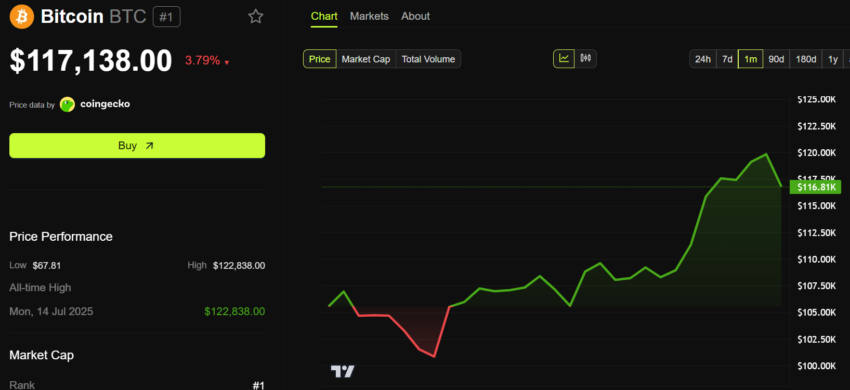-
The US June Consumer Price Index (CPI) report revealed a 2.7% inflation rate, aligning with market expectations and prompting a modest uptick in Bitcoin prices.
-
Economic analysts attribute the inflation rise partly to former President Trump’s tariffs, which have led businesses to transfer increased costs to consumers, intensifying price pressures.
-
According to COINOTAG sources, Bitcoin’s muted price response reflects preemptive market adjustments, with interest rate outlooks shifting post-CPI release.
US June CPI inflation hits 2.7%, impacting Bitcoin as markets adjust to tariffs and geopolitical tensions. Fed policy outlook remains crucial for crypto investors.
June CPI Inflation Hits 2.7%, Influencing Bitcoin Market Dynamics
The US Bureau of Labor Statistics reported a 2.7% year-over-year increase in the Consumer Price Index for June, matching economists’ forecasts. This marks the second consecutive month of rising inflation, signaling persistent price pressures within the economy. The headline figure was supported by a 0.3% month-over-month increase, consistent with market consensus.
Following the announcement, Bitcoin experienced a moderate price increase, climbing toward $117,138. This restrained reaction suggests that investors had largely anticipated the inflation data, having already adjusted positions in advance. Prior to the CPI release, Bitcoin’s price had declined from a recent peak of $123,000, reflecting a cautious approach amid economic uncertainty.

Bitcoin (BTC) Price Performance. Source: COINOTAG
Market participants are closely monitoring Federal Reserve communications scheduled for today, as policymakers’ comments will provide further guidance on monetary policy amid evolving inflation trends.
Geopolitical and Trade Factors Driving Inflation Pressures
Analysts highlight that inflationary pressures stem not only from domestic economic factors but also from external influences such as geopolitical tensions and trade policies. The ongoing conflict between Israel and Iran has impacted oil supply routes, notably the Strait of Hormuz, contributing to elevated energy prices that feed into broader inflation.
Moreover, economists point to the legacy of tariffs imposed during the Trump administration as a significant driver of current inflation. Businesses initially absorbed these costs or stocked inventories to mitigate price increases but are now passing expenses onto consumers. This shift aligns with Federal Reserve Chair Jerome Powell’s remarks anticipating higher inflation readings over the summer months.
Gregory Daco, Chief Economist at EY-Parthenon, noted, “Businesses have exhausted many strategies to shield consumers from tariffs, resulting in increased price transmission.” The Fed’s June meeting minutes revealed internal debate over tariffs’ inflationary impact, underscoring the complexity of monetary policy decisions in this environment.
Market Expectations and Federal Reserve Policy Outlook
Prior to the CPI release, the CME FedWatch Tool indicated a 95.3% probability that the Federal Reserve would maintain interest rates between 4.25% and 4.50%, with only a 4.7% chance of a rate cut. Following the inflation data, these probabilities have shifted, reflecting market recalibration of monetary policy expectations.
The upcoming Federal Open Market Committee (FOMC) meeting on July 30 will be pivotal, as investors seek clarity on the Fed’s response to sustained inflation and its implications for asset markets, including cryptocurrencies.
Conclusion
The June CPI report confirms persistent inflationary pressures in the US economy, influenced by trade policies and geopolitical risks. Bitcoin’s measured price response indicates that markets are adapting to these developments with cautious optimism. As Federal Reserve communications unfold, crypto investors should remain attentive to policy signals that will shape market trajectories in the near term.
